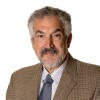How many Muslims live in the United States?
Until now, basically, no one has had any idea. By law, the U.S. Census cannot ask questions about religion. There are also plenty of other difficulties in coming up with a number, starting with the problem of defining who is a Muslim: Does one include non-standard believers like Louis Farrakhan and the Druze?
Uncertainty has generated some wildly divergent numbers. A large 1990 demographic survey counted 1.3 million Muslims. In 1998, a Pakistani newspaper put the number at 12 million. Even the usually authoritative Yearbook of American and Canadian Churches found 527,000 American Muslims in 1996 and six times as many (3.3 million) in 1998.
Needing some kind of consensus figure, Muslim organizations came up with a self-acknowledged “guestimation” of 6 million, which this year they decided to raise to 7 million.
These numbers were so widely adopted (even by this writer) that they acquired a sheen of authority. But repetition does not transform a guess into a fact.
The trouble is a generic one; religious organizations commonly inflate their membership to enhance their voice in the public square.
Fortunately, the smog of imprecision finally lifted last week, with the appearance of two authoritative studies by highly regarded demographers. (Each study relied on respondents’ religious self-identification.) Interestingly, they agreed on a very similar number, one much smaller than the old guestimate.
The American Religious Identification Survey 2001 carried out by the Graduate Center of the City University of New York polled more than 50,000 people and found the total American Muslim population to be 1.8 million.
Meanwhile, the University of Chicago’s Tom Smith reviewed prior national surveys and (in a study sponsored by the American Jewish Committee) found that the best estimate puts the Muslim population in 2000 at 1,886,000. (With a nod toward figures supplied by Islamic organizations, he allowed that this number could be as high as 2,814,000 Muslims.)
In other words, two authoritative studies carried out by scholars found that American Muslims number under 2 million - less than a third of the hitherto-consensus number.
To this, the militant Islamic groups in Washington - widely but erroneously seen as representative of American Muslims - responded with predictable hyperbole. The Council on American-Islamic Relations (CAIR) furiously accused Smith’s report of working “to block Muslim political participation.”
The American Muslim Council (AMC) charged Smith with nothing less than trying to “deny the existence of 4 1/2 million American Muslims” and blamed him for “tearing at the very heart of America.”
The AMC also amusingly claimed that its own estimate of “more than 7 million” Muslims came from the 2000 Census figures - erroneously thinking that the Census asks about religion.
Oh, and that’s the same AMC which in 1992 pressured a researcher named Fareed Nu’man to find 6 million Muslims in the country; Nu’man later testified that he counted just 3 million and was fired by the AMC when he refused to inflate his number above 5 million.
Why does the militant Islamic lobby insist on the 6-7 million figures? Because a larger number, even if phony, offers it enhanced access and clout. Convincing the Republican Party that Muslims number 8 million, for example, led to urgent calls from its chairman for “meeting with [Muslim] leaders,” something which becomes less of a priority when the Muslim population turns out to be much smaller.
Knowing the real number of Muslims will, most immediately, likely impede two militant Islamic efforts now underway: one (pushed by The Minaret magazine) to get Americans to acknowledge that their own misdeeds partially caused the atrocities of Sept. 11; and another (led by CAIR) to halt the U.S. military campaign in Afghanistan. The longer-range implications will be yet more significant.
--------------------------------------------------------------------------------
April 22, 2003 update: For updates on this subject, see “How Many Muslims in the United States?”
--------------------------------------------------------------------------------







